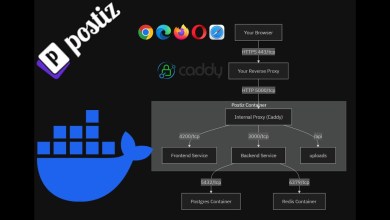(HVA1) Interview Questions Discussion part1 , Hardware, Laptop Configuration
20240618 145744
How to check system/PC/Laptop configuration
-MSINFO32, About your PC, Task Manager
What is your laptop/Computer configuration
CPU: Intel i5-10210U , 64 Bit
RAM: 16GB
Storage -HDD/SSD — SSD 500GB
OS: Windows 10 Pro
GPU(optional)
—————————————–
PC Components
CPU, RAM, ROM(BIOS), MB, SMPS
CPU
RAM and ROM
RAM
ROM – BIOS, BIOS Settings, CMOS Battery
MB
SMPS
Storages – HDD -PATA/SATA, SSD – SATA, NVMe M.2
Laptop RAM:
Package — Desktop RAM – DIMM
— Laptop RAM – SODIMM
Change the RAM:
Open Laptop Case – check RAM Slots, Previous RAM details
check CPU support and Motherboard support — Type of RAM,Max Size of RAM
————
RAM and Hard disk
RAM is primary memory, Physical memory, Main memory
RAM is volatile
when system turn off data in RAM is lost
RAM is temprary memory
Without RAM system can’t boot — cause POST failure
Hard disk is Secondary Memory
Hard disk is non volatile
even system is turn off data remains in HDD
HDD is mass storage device
HDD is to store Operating System, Applications, Data.
—————-
Boot Process:
Power On the system/computer
1. POST – power on self test
2. Search for Bootable Device based on BIOS boot priortiy
3. Load Bootloader, Bootloader will tell where is OS and How to load OS
4. Load OS
5. Login Screen – login to system
6. Startup App, Services starts, so user can start use the system
Issue at boot time — POST failure , Bootable device not found
If your system is slow what to do? or how to improve system performance
——————————————————
Operating System
Differnet OSs
Windows OS – Desktop OS, Server OS
Linux OS
MAC OS
Unix OS
Types:
SOS : Simple OS — Desktop OS — MS DOS, Win 10,11, Ubuntu Desktop
NOS : Network OS — Server OS — Windows server, Linux, Unix, mainframe
SUST — MS DOS
SUMT — Windows OS
MUMT — Linux/Unix
Desktop OS and Server OS
Desktop OS: Application, Games, Data processing, Multimedia, web browsing,
programming, Playing –Audio, Video, it’s a Client PC or End user Device
Server OS: Support Server Applications, it has Built in Server features to
provide services like dhcp, dns, web,mail,authentication, ..etc
Windows and Linux
——————————————————————-
Web Browser – Chrome, MS Edge, Firefox, Brave, Opera — Applications
Application run on OS
Purpose of Browser — access website
Purpose of OS — Runs application,
provide environment to run applications, user interface, intract with Hardware and User
Without OS you can’t run applications.
—————-
Device Driver
How to Add Printer
———————————-
Windows Desktop OS -versions– Win 7,8,8.1, Win 10,Windows 11
Window 10/11
Editions: Home, Pro, Enterprise
Pro & Enterprise features – Hyper-V, Bitlocker, Local GroupPolicy, WorkFolder, AppLocker
Can Join to the Domain
Server OS
Windows Servers NT, 2000,2003,2008/R2, 2012/R2,2016,2019,2022
Linux/Unix
Linux OS – RHEL, CentOS, Ubuntu, Debain, Fedora.,
Unix – Solaries 11, HP-UX,
———————————————————-
Server provide service to the client devices
Client request for a service to the server, Server responds to the client
Ex. Client Send Http request to a webserver for getting web page
Web server send http response to the client with webpage
Servers understand Client Request by Protocols
How a server becomes a specfic type of server, based on what service it is providing
we call that server as a specfic server
Types Servers – Mail Server, Web Server, File Server, Database server, Deployment Server(WDS)
VPN Server, Print Server, Authentication(AD Domain controller) Server..,
How a server can able provide a service
By install and configure built-in roles/features or Server Applications in
the server OS
Windows Server:
built-in role and feature
ADDS role — Server becomes a Domain Controller — Authentication server
IIS – web server
WDS — Windows Deployment server — to deploy os to client through network
DHCP — DHCP Server — Assign/Configure IP Address to the Client devices
DNS — DNS Server — Maintain/contains records of Devices name and their ip address
WSUS — update server
Server Applications:
MS Exchange — mail server
Zimbra, Squalmail, Dovecat,Postfix — mail server
MS SQL server, Oracle DB, MySQL — database server
Apache Httpd, tomcat, glassfish, nginx — web server
MS Hyper-V — virtualization server
vmware ESXi/vSphere, Citrix – XenServer, Proxmox-VE, RHEV — virtualiation server
———————————————————————–
[ad_2]
source


